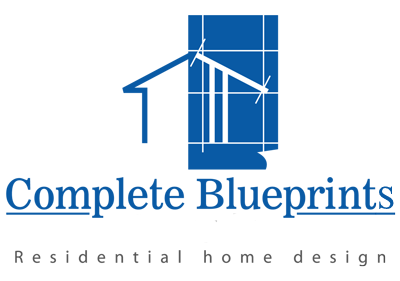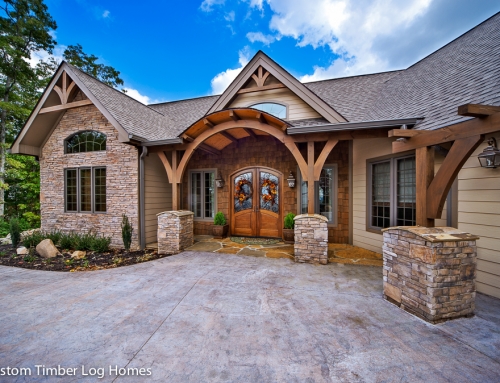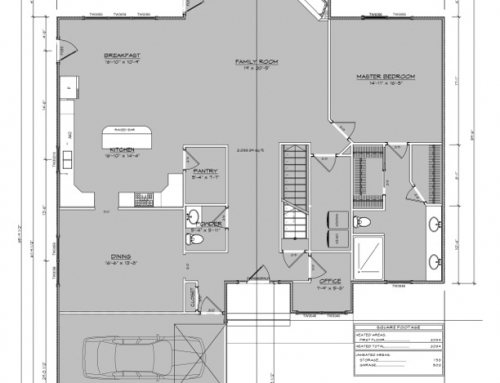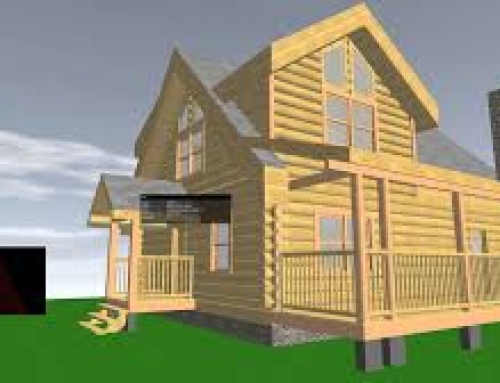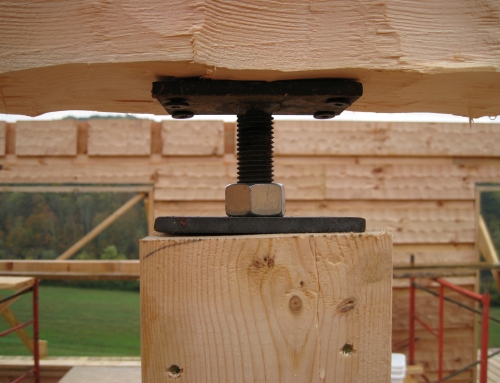 Fall: The Perfect Time to Start Planning for Your New Log Home
Fall: The Perfect Time to Start Planning for Your New Log Home
Log Home Planning
As the weather begins to cool, and football finally makes it back into our living rooms, it just might also be the perfect time to sit down with a cold one and start your log home planning for your dream home! As we start yet another season of activities one of our recommendations is to start investing in your future. While the stock market isn’t exactly the place to invest without reservations, building your custom log home on that perfect piece of property can be a much more beneficial investment in time and resources. After all, they aren’t making any more land, and a well-built log home is an investment suitable to hand down for generations to come.
While this time of year may not be the best for beginning construction projects, it suits itself very well to planning for a Spring build. Many log home manufacturers are holding training sessions and open houses during the winter months, and it can be a very helpful process for picking the best supplier or designer of your new log home dream. As with all things in life, proper research is an invaluable tool in picking a reputable company to help you plan, and eventually build. Find our take on log home planning below.
This is actually an exciting part of the construction process, when you get to begin the design of your home. You can also start narrowing down the list of log home manufacturers or builders. During this very important phase, budgets should be determined, builders chosen, and a prepared cost estimate using a preliminary set of construction documents to help obtain financing. There are also a number of other critical steps to ensure that, once started, construction proceeds smoothly.
An example of a set of pre-construction activities follows:
1) Acquire Land
If you haven’t already done so, choosing the perfect spot for your new home is a huge step. The good news is land is at record financial lows. Your local builder/dealer or a real estate agent should be able to help with this step, but should you find yourself needing more assistance, feel free to call or email us for help. . If you find land that’s suitable for your dream home, before making an offer, make sure the following list is followed:
Check covenants and zoning restrictions
Obtain boundary survey (Plat Map)
Check availability of utilities, and ensure utilities are as described
Install well, if a city water system isn’t available, or if you prefer to be off the water grid
Check septic/sewage availability and restrictions, and get your agent to put this area in writing
2) Obtain Financing
Once you find the picturesque spot for your new home, you can start the financing proceedings (if applicable). It is always a good idea to check both local banks and regional institutions as well. Often times the regional branch will have more experience in dealing with a loan for log homes. The most desirable loan to obtain is a one-close, construction-permanent loan. This is a single loan that accomplishes two things with only one set of closing costs. The construction portion pays builders, subcontractors and materials suppliers in a series of draws, and the more experience a financial institution is with log homes, the better off your contractors and sub-contractors will be in the long run. With a construction loan, once the home is constructed, the loan is automatically rolled into a typical mortgage payment.
3) Choose a Log Home Manufacturer
While the tradition of log homes dates back to the time of the country’s founding fathers, construction methods and materials are far better today. Some of the tools of the trade have changed, but many remain the same generation after generation. While this is fact, it still remains that a log home is only as good as the materials and the builder installing the materials. To start shopping for log home producers, visit the log home council at http://www.loghomes.org This can be a good starting location, but don’t hold out for a member of the council if you are familiar with the products of a local company. The council can be a good step in the right direction, but don’t let a great deal on the exact same product get away simply because of a membership.
4) Design Your Dream Home
This is the time when you get to block out the design of your dream home, and begin the preperation work for the beginning of construction. Home design is a subject of great importance when beginning this process, and one can spend hours absorbing the subtleties of a floor plan. Plus, a plan that has been built before can be an excellent starting point to create that perfect custom design, just for you. Most Log Homes Companies will have designers and/or engineers on staff to create a unique floor plan, but this varies a great deal from manufacturer to manufacturer. Almost all reputable companies will work with independent architects or designer firms as well. Most can also create a floor plan from a sketch of your own design. A great deal of money can be saved by developing a concept floor plan ahead of time, and visiting manufacturer locations with this in hand can be an invaluable tool.
5) Obtain and study your Survey & Plot Plan
In some areas, a professional survey is required to purchase land. Where not required, it is highly recommended that a survey be completed to provide insurance against potential title problems, and possible border issues. Often the least expensive approach is to purchase a package from the surveyor that includes:
Boundary survey
Plot plan (shows house location on land along with proposed road, well location, septic area and other legal features)
Stake foundation (stakes building site according to house location shown on plot plan)
Wall check (usually required by lender)
Final house location (usually required by lender)
Often good builders will offer this service through a local company they are used to using in such occasions.
6) Choose a Log Home Builder
When you buy a log home from a reputable company, they will provide grade quality logs and timbers, as well as construction drawings, or a construction manual to help qualified builders through the process. Some companies even offer construction classes, to help educate experienced conventional builders on their building systems.
Some home providers offer dry-in services where teams of builders are sent to your location to create a weather-tight outer shell of walls and roof. In this instance, they leave interior finishes to other contractors. Still others offer full turn-key construction, which means they will hand you a set of keys and the garage door opener, point you in the right direction, and teach you the basics of upkeep and maintenance to ensure your home stays perfect. So all you have to do is ‘turn the key’ and walk on in, sit down and crack open a cold one, turn on the big game and enjoy the home of your dreams.
Many companies leave construction to independent builders and contractors. It’s up to these individuals to turn that log home package into a comfortable and well-crafted home. Choosing the right professional for this job is the final step in making your dream home a reality. This step is probably the single most under appreciated step in the process. It takes a true craftsman to construct a log home or timber home as it should be, and a reputable, trust worthy, tried and tested artisan is truly worth their weight in gold.
If you plan as you should, and line up everything according to the list above, by this time next year you could be in your new log home, cuddled up with your loved ones and next to a warm fire.
No matter how you plan on constructing your home, no amount of planning is too much, and it is always a great idea to speak with people who have made it through the process successfully. Most of these people would be glad to share their stories.
LINKS:
National Association of Home Builders – http://www.nahb.org
Log Home Council – http://www.loghomes.org
article re-post from original from http://www.loghome.org
